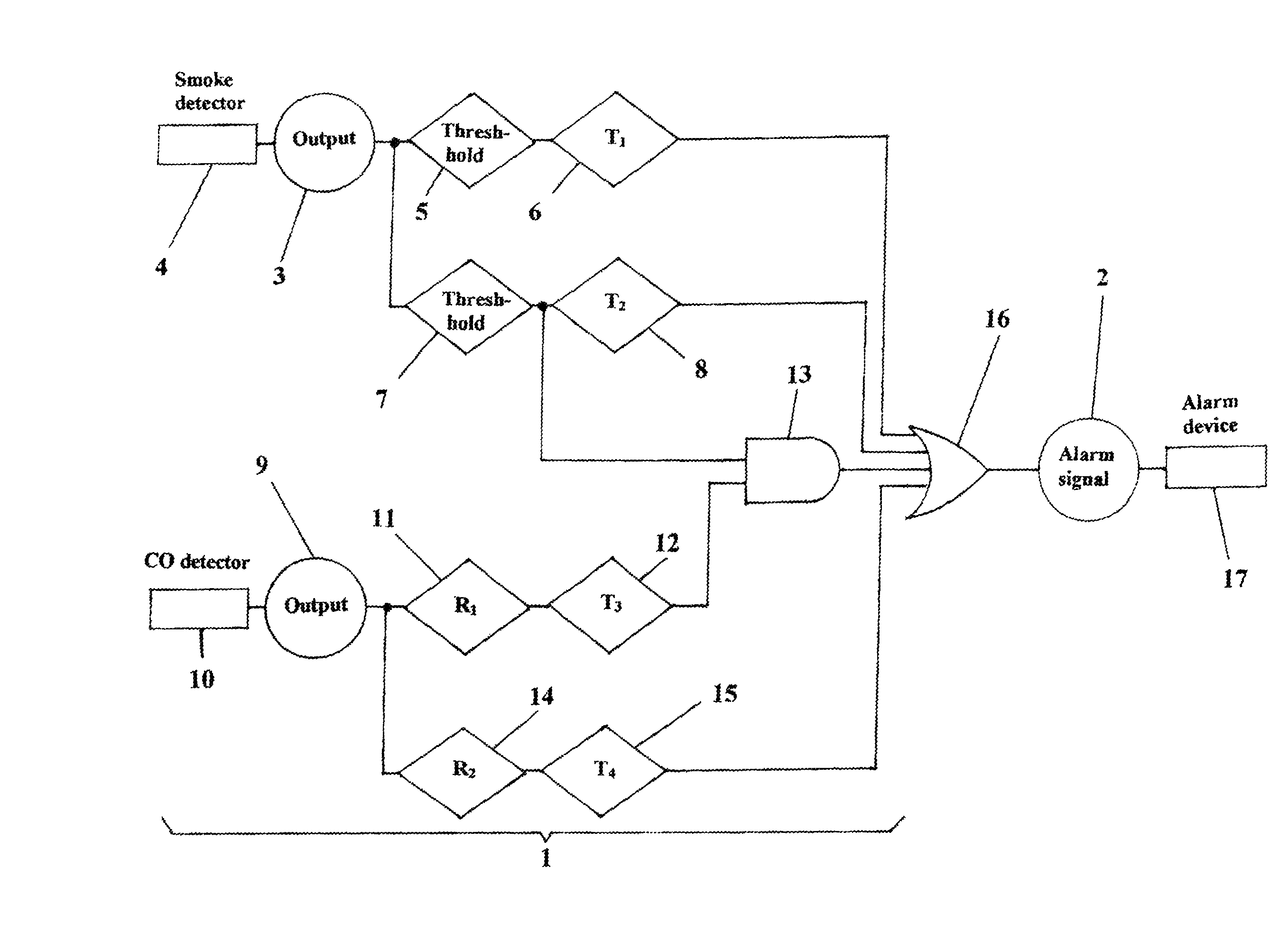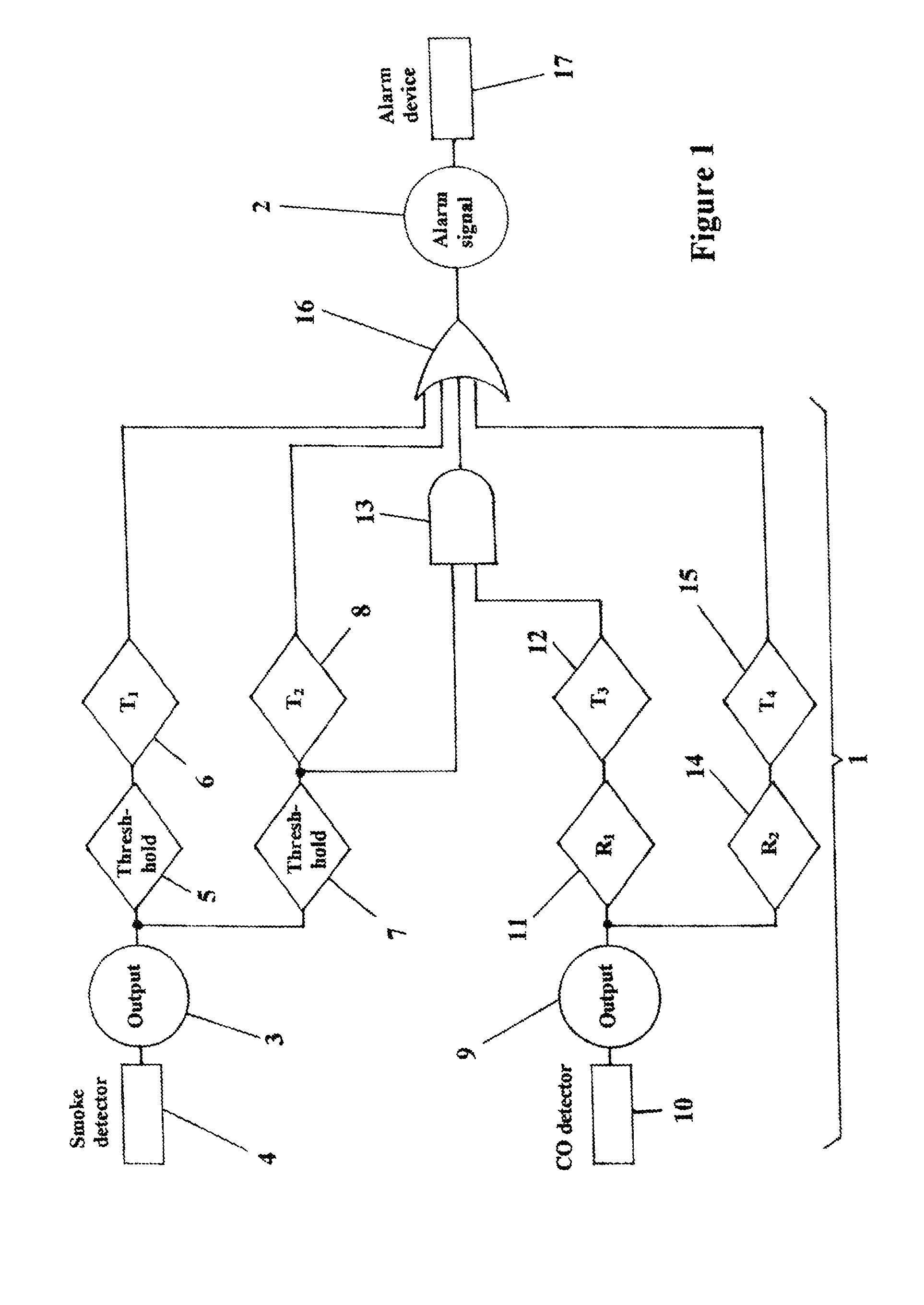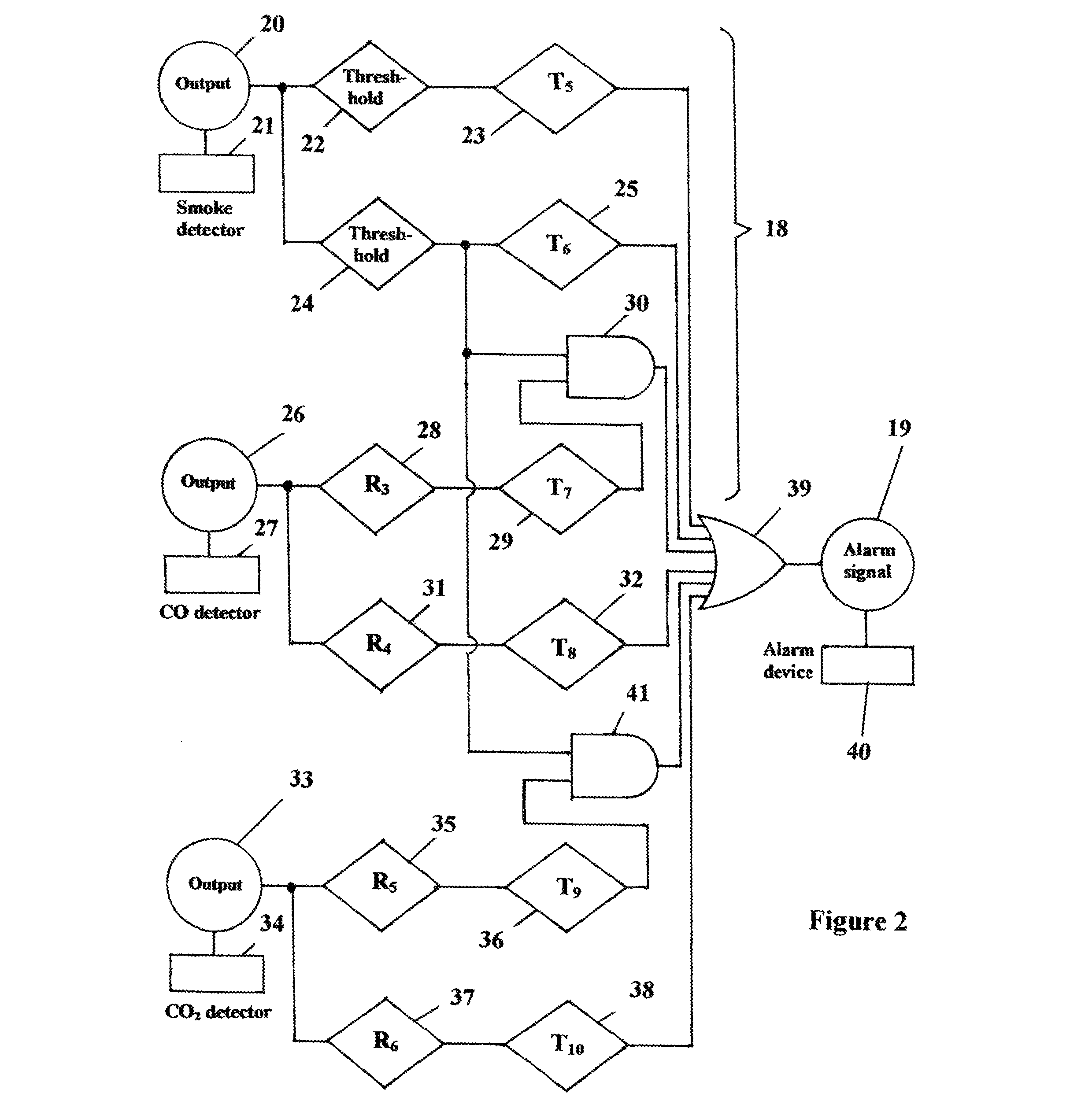False alarm resistant and fast responding fire detector
a fire detector, fast technology, applied in the field of gas analysis, can solve the problems of bit more power, too high cost, and the inability to take advantage of the fire detection scheme,
- Summary
- Abstract
- Description
- Claims
- Application Information
AI Technical Summary
Benefits of technology
Problems solved by technology
Method used
Image
Examples
first embodiment
[0021]FIG. 1 is a logic diagram of a practical and false-alarm resistant fire detection system 1 according to the present invention. As illustrated in FIG. 1, fire detection system 1 generates an alarm signal 2 when any of the following four conditions is met.
[0022]First, an alarm signal 2 will be generated if an output 3 of a smoke detector 4 exceeds a threshold level 5 of N % light obscuration per 0.3048 meter (1 foot) for greater than T1, a first pre-selected time period 6. Smoke concentration measured in units of “percent light obscuration per 0.3048 meter (1 foot)” applies to both ionization and photoelectric smoke detectors although the output is different for them in reflecting such a smoke obscuration level. Second, an alarm signal 2 will be generated if output 3 from smoke detector 4 exceeds a reduced threshold level 7, of M % light obscuration per 0.3048 meter (1 foot) for greater than T2, a second pre-selected time period 8.
[0023]Third, an alarm signal 2 will be generated...
second embodiment
[0026]The embodiment of a practical and false-alarm resistant fire detection system as described in FIG. 1 works very well for smoldering fires. However, its speed of response to flaming or rapidly moving fires might be too slow. Those types of fires involve mostly complete combustion, giving rise to an abundance of CO2 gas but very little smoke or CO for detection. In order to overcome this speed of response limitation, the logic diagram of the current invention is advanced and is depicted in FIG. 2.
[0027]FIG. 2 is a logic diagram of a fast responding and false-alarm resistant fire detection system 18. As illustrated in FIG. 2, fire system 18 generates an alarm signal 19 when any of the following six conditions is met.
[0028]First, an alarm signal 19 will be generated if an output 20 of a smoke detector 21 exceeds a threshold level 22 of N % light obscuration per 0.3048 meter (1 foot) for greater than T5, a first pre-selected time period 23. Smoke concentration measured in units of ...
PUM
 Login to View More
Login to View More Abstract
Description
Claims
Application Information
 Login to View More
Login to View More - R&D
- Intellectual Property
- Life Sciences
- Materials
- Tech Scout
- Unparalleled Data Quality
- Higher Quality Content
- 60% Fewer Hallucinations
Browse by: Latest US Patents, China's latest patents, Technical Efficacy Thesaurus, Application Domain, Technology Topic, Popular Technical Reports.
© 2025 PatSnap. All rights reserved.Legal|Privacy policy|Modern Slavery Act Transparency Statement|Sitemap|About US| Contact US: help@patsnap.com



